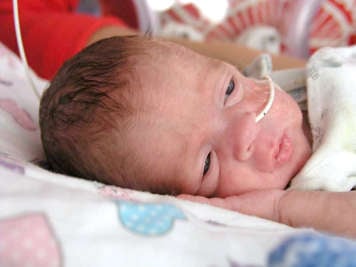Of all the potential complications that may challenge a premature baby, injuries to the brain are probably the most alarming to parents. While it is true that problems within the brain can lead to problems in all parts of the body and can have irreversible long-term effects on a child’s life, a baby’s brain is a work in progress and continues to develop for years after birth.

Brain injury is not necessarily a catastrophic event leading to serious disability or death. Some premature babies are capable of overcoming, at least to some degree if not completely, certain types of injuries to the brain. Much of this depends on the nature and extent of the injury. As with the many other challenges associated with prematurity, the more premature babies with lower birth weights are more at risk for brain injury and tend to have a more difficult time with the injury.
While some babies may recover completely from brain injury, others will not. Neurological conditions, often the end result of brain injury, can be irreversible, have mild, moderate, or severe effects on the body and mind, and can have serious short-term and long-term consequences.
The structure and function of the mature brain
It is almost a cliché to describe the brain as the body’s computer; it does the thinking and controls movement. But the brain is much more complex than any existing computer. It senses and interprets information coming from all parts of the body, it controls vital functions subconsciously, and it is malleable and adaptable.
Cerebrospinal fluidAs the fetus’s brain develops these abilities, it is also physically preparing its defenses against injury and the outside world in general. The brain’s first test in this regard usually comes at birth: the baby’s head, the largest part of the body, must make its way through the birth canal and into the world. The brain has several ways of protecting itself during this journey. Like adults, a baby’s skull is made up of several bones or plates. However, at birth these bones have not yet fused together, which gives the skull the ability to be molded somewhat. This ability makes for an easier delivery. In the months following birth, the plates of the skull settle and fuse together, creating a hard shell that protects the brain.
Cerebrospinal fluid (CSF)
In addition to being encased in the skull, the brain is also surrounded by cerebrospinal fluid or CSF. This fluid is found around the brain and spinal cord, and in cavities deep within the brain, called ventricles. This system of CSF functions to nourish the brain but also to cushion the brain from knocks. The ventricles themselves are surrounded by brain tissue and blood vessels that deliver oxygen to the brain. In a premature baby, these blood vessels are thin and weak, and are vulnerable to injury.
